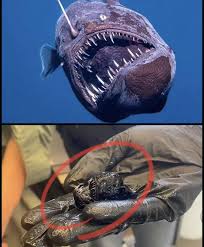Unveiling the Mysteries of Anglerfish

Introduction
The anglerfish is one of the most intriguing creatures inhabiting the depths of the ocean. Known for its bizarre appearance and unique hunting methods, this fascinating fish plays a crucial role in marine ecosystems. Recently, anglerfish have gained attention not just for their unusual physical characteristics, but also for their adaptations that allow them to survive in extreme conditions of the deep sea.
Physical Characteristics
Anglerfish are easily recognizable by the bioluminescent lure that protrudes from their heads, which they use to attract prey in the dark abyssal waters. This grim-looking fish varies in size, with some species measuring only a few inches long while others can grow quite large, reaching lengths of up to three and a half feet. Their wide mouths and sharp teeth allow them to trap unsuspecting prey effectively. This impressive adaptation has made them successful hunters in an environment where competition is fierce and food is scarce.
Habitat and Behaviour
Primarily found in deep-sea environments, anglerfish inhabit depths ranging from 200 to over 6,000 feet. Their unique adaptations allow them to thrive in such harsh habitats, with some species being able to withstand high pressures and low temperatures. Anglerfish are also known for their unconventional reproductive methods; many females are significantly larger than males, and males often attach themselves to the female in a parasitic manner, essentially becoming a part of her body to ensure successful reproduction.
Recent Discoveries
In recent months, researchers have been diving deeper into anglerfish behaviour and biology. A study published in the journal “Marine Ecology Progress Series” highlighted the importance of anglerfish in their ecosystems, revealing insights into their daily activities and feeding habits using underwater cameras. These findings not only advance our understanding of anglerfish but also highlight the need to protect their natural habitats as they face threats from climate change and deep-sea fishing.
Conclusion
The anglerfish remains a captivating subject of study in marine biology. With their unique adaptations and biological curiosities, they illustrate the vast diversity of life in our oceans. As we continue to explore the mysteries of the deep, further research on anglerfish and their ecosystems will be vital for understanding not only their role in the ocean but also the overall health of marine environments. Protecting these creatures and their habitats will be essential as we face the ongoing impacts of climate change and human activity.








